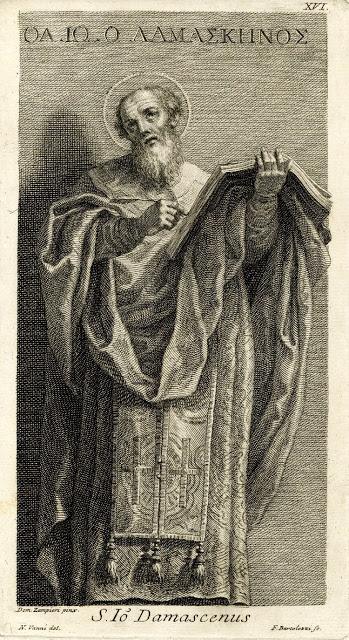Theologians beginning in the 1950s began to question to the concept of “consecration to Mary” or “Marian consecration.” Everyone is agreed that people and things can be consecrated to the Most Holy Trinity, and this true of the Eucharist in a preeminent way, but also true for the priesthood, nuns, and holy vessels, and our baptized bodies as tabernacles of the Holy Spirit (which is the reason that we must retain holy purity and custody of the eyes).
How then could people or items be consecrated to the Blessed Virgin Mary who is a human person and creature? This question often comes up regarding Our Lady’s request for the Marian consecration of Russia to the Immaculate Heart of Mary. Some say this is impossible since the Immaculate Heart of Mary is created and therefore not a proper object of solemn consecration.
Marian Consecration and Saint Louis de Montfort
Saint Louis de Montfort is the saint to answer this question since he shows that all Marian consecrations (or to any saint for that matter) are ordered to our Lord Jesus Christ through His Sacred Humanity. Since all saints are members of His Body and partakers of His Divine Nature, consecrations to them are relative and are therefore through them to Christ our God.
The same is true for prayer to saints. We pray to saints but understand that the prayer “to” a saint is relative and not absolute. Absolutely speaking, the intercessions of saints have their final terminus in Jesus Christ, the one mediator between God and men.
“For there is one God: and one mediator of God and men, the man Christ Jesus.” (1 Timothy 2:5, D-R)
Saint John Damascene is one ancient example of “Marian consecration.”
We are present before you, O Lady, Lady I say and again Lady, binding our souls to our hope in you, and as to a most secure and firm anchor , to you we consecrate {anathémenoi} our minds, our souls, our bodies, in a word, our very selves, honoring you with psalms, hymns and spiritual canticles, insofar as we are able-even though it is impossible to do so worthily. If truly, as the sacred word has taught us, the honor paid to our fellow servants testifies to our good will towards our common Master, how could we neglect honoring you who have brought forth your Master? In this way we can better show our attachment to our Master.
-St John Damascene, “Sermo Prima de Dormitione,” Patroligia Graeca 96, 720C-D, 721A-B.
Marian Consecration and Saint John Damascene
Saint John Damascene, a Doctor of the Catholic Church, consecrates himself and his hearers to the Blessed Virgin Mary using the word anathémenoi. You will recognize this as the same word from which we derive “anathema” which can mean “set above,” “suspended,” “banned,” and usually “accursed.” It is the Greek word used to translate the Hebrew word חֵרֶם {charem} for those people or things which belong to God as either holy or cursed. The same idea is preserved in Latin where “sacrosanctum” can refer to persons who are either “holy” or “cursed.” For example, to be “sacrilegious” has the same connotations.
All this relates to things “reserved for God” and this can be a blessing or a curse. For example the Most Holy Sacrament of the Eucharist is the greatest blessing for one receiving It in a state of grace, but also the greatest curse if received in a state of original sin or mortal sin. Sacrosanctity cuts both ways.
Back to St John Damascene. He consecrates himself to Mary in this way by using the term “anathémenoi.” This means that he is totally and completely given over and reserved for the Blessed Virgin Mary. (this should remind us of Blessed John Paul II, whose motto was directed to Mary: “Totus tuus” or “Totally yours.”) Woe to him if should fail in his devotion to her. Yet this “Marian anathema” also includes the amazingly brilliant graces that he shall receive through her from Christ.
Moreover, this Marian consecration in the form of an “anathema” is Christocentric (Christ-centered), or as I prefer to say, Christotelic (leading to Christ). Observe how St John Damascene concludes his consecration to Mary: “In this way we can better show our attachment to our Master.” Our Master is Christ the Lord.
The whole point of Marian consecration is not to exalt Mary to the level of deity or to place her in competition with Christ. True Marian consecration (as also endorsed by St Louis de Montfort and St Maximilian Maria Kolbe) leads to greater love and service for Christ.
Do you want to consecrate yourself to the Immaculate Mother in this way? If so, I heartily recommend both St Louis de Montfort’s consecration, but especially that of St Maximilian Maria Kolbe.
To use the Kolbe consecration in a solemn way, choose a Marian feast day. Fast on the day before (one meal), pray the Holy Rosary and attend Mass and Confession on that Marian feast day, and then recite the prayer of consecration. Renew the consecration annually.
Here’s the Kolbe form of consecration.
Our Immaculate Lady, Mother of the Church, pray for us.
You can leave a comment by clicking here.



Comments Policy: I reserve the right to delete comments that are offensive or off-topic. If your comment contains a hyperlink to another site, your comment automatically goes into "Comments Purgatory" where it waits for release by way of moderation.